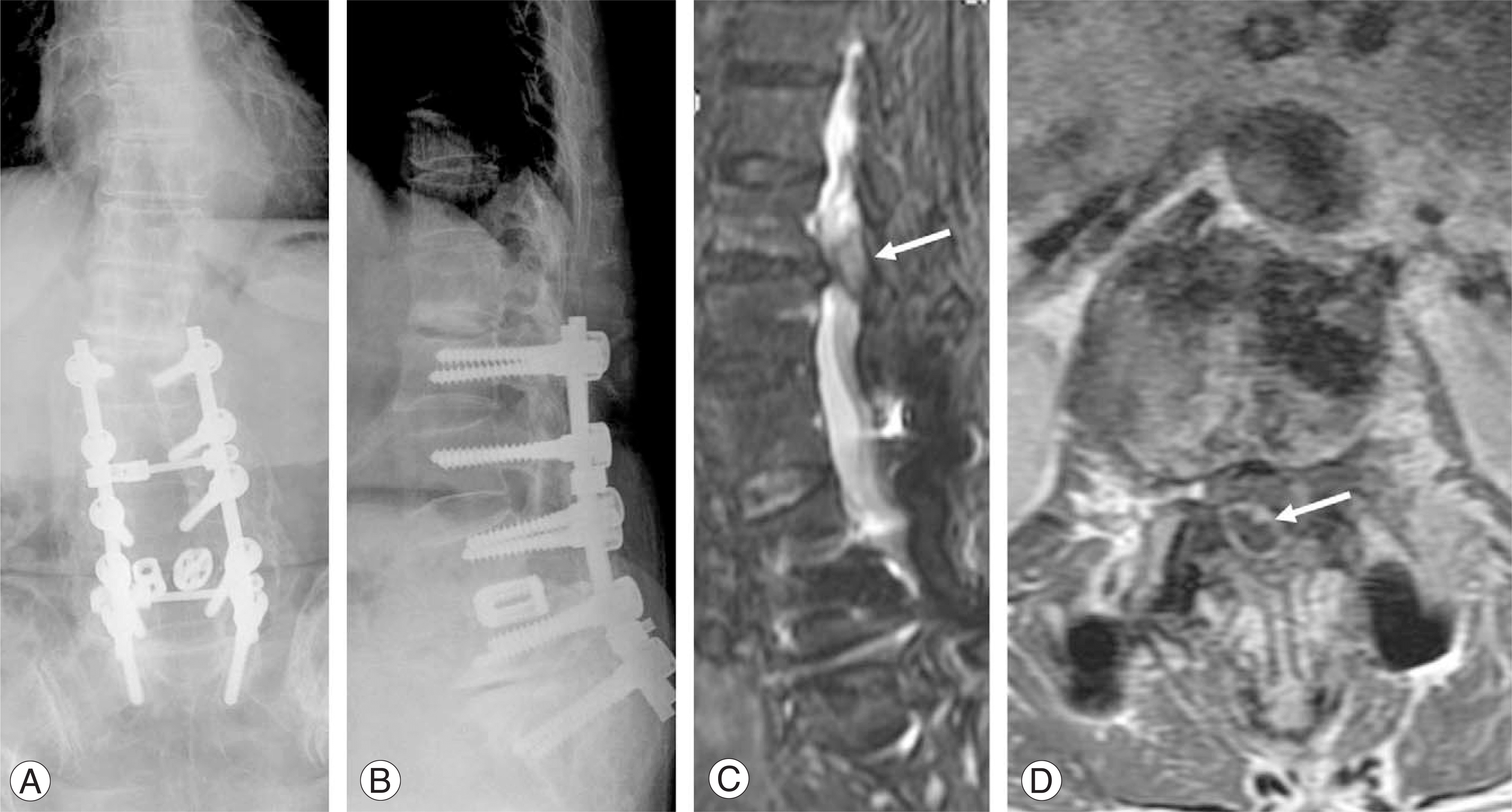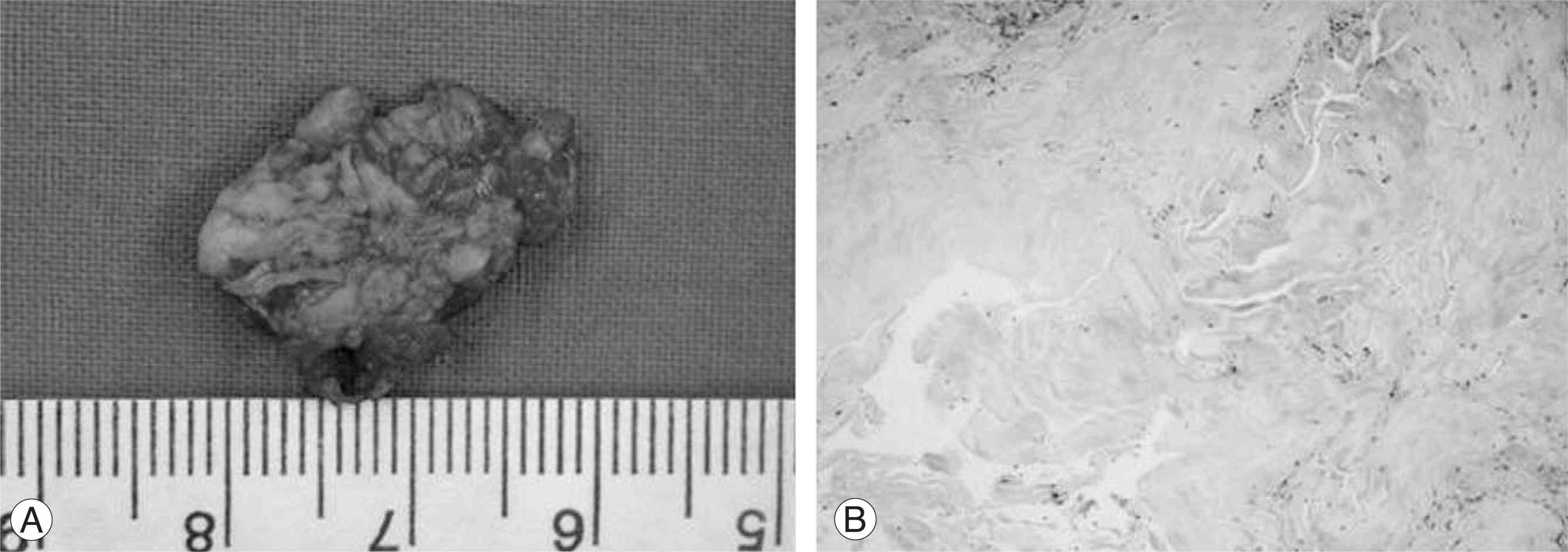Abstract
– Abstract – Posterior epidural migration of sequestered lumbar disc fragments is an uncommon event. We present here an especially uncommon case involving a patient with paraparesis that was due to posterior migration of a ruptured disc in the adjacent segment after spinal fusion. The patient had a herniated lumbar disc in a diseased spinal junction with sequestered fragments that were located posterior to the thecal sac.
Go to : 
REFERENCES
1). Bonaroti EA, Welch WC. Posterior epidural migration of an extruded lumbar disc fragment causing cauda equina syndrome. Clinical and magnetic resonance imaging evaluation. Spine. 1998; 23:378–381.
2). Manabe S, Tateishi A. Epidural migration of extruded cervical disc and its surgical treatment. Spine. 1986; 11:873–878.

3). Giannini C, Scheithauer BW, Wenger DE, Unni KK. Pigmented villonodular synovitis of the spine: a clinical, radiological and morphological study of 12 cases. J Neurosurg. 1996; 84:592–597.

5). Masaryk TJ, Ross JS, Modic MT, Boumphrey F, Bohlman H, Wilber G. High-resolution MR imaging of sequestered lumbar intervertebral disks. Am I Roentgenol. 1988; 150:1155–1162.

7). Lutz JD, Smith RR, Jones HM. CT myelography of a fragment of a lumbar disk sequestered posterior to the thecal sac. AJNR Am J Neuroradiol. 1990; 11:610–611.
8). Bonaldi VM, Duong H, Starr MR, Sarazin L, Richardson J. Tophaceous gout of the lumbar spine mimicking an epidural abscess: MR features. AJNR Am J Neuroradiol. 1996; 17:1949–1952.
Go to : 
 | Fig. 1.(A) Initial x-ray of the thoracolumbar spine shows junctional problem at L1-L2 level. (B) Preoperative thoracolumbar spine lateral view shows junctional problem. (C) Posterior epidural disc fragment is detected with mild enhancement on sagittal MR enhancement image (arrow) (D) Margin of posterior epidural disc fragment is seen with enhancement at the posterior to thecal sac of L1-2 intervertebral disc space on axial MR enhancement image (arrow) |




 PDF
PDF ePub
ePub Citation
Citation Print
Print



 XML Download
XML Download